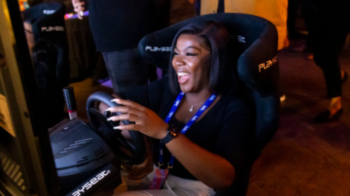The argument for fewer, better ads
Posted on Monday 13 March 2023 | Dom Tillson - Marketing Director at Azerion UK
Dom Tillson, Marketing Director at Azerion UK, makes the case for serving fewer, better ads, in contextually relevant, premium environments
Keith Bontrager, one of the forefathers of the West Coast Mountain Biking scene, coined a great phrase: “Strong, Light, Cheap - pick two”.
As a keen cyclist, it inspired a concept I've been toying with to describe the ad ecosystem called the ‘Impossible Advertising Triangle’, where we try to deliver experiences that benefit publishers, advertisers, and consumers.
For the last two decades, the ad industry has largely served the interests of the two: publishers and advertisers. To this day there are too many examples of over-crowded, slow-loading pages bloated with cheap ads of low quality, that deliver little or no effectiveness at the expense of the consumer experience.
The halo effect
But it's not all doom and gloom. It’s been shown that there is significant value in advertising across premium publishers and content, and a halo catalyser effect exists, where metrics such as brand consideration are significantly higher for engaged consumers accessing premium content.
As the value of attention rises, many forward-thinking players in the industry have been reinvigorating the importance of the consumer in this scenario to advocate a ‘fewer, better’ ads philosophy that improves the value exchange found within the ‘Impossible Advertising Triangle’.
The impact of fewer, better ads
In reality, fewer, better ads drive better campaign performance with high-impact formats delivering 15 - 20 times more attention than standard formats. They command bigger CPMs, and require fewer ad calls, which leads to lighter, faster page loads. Not only is this better for the environment, but it delivers an improved user experience as consumers are able to spend more time on pages of quality content. They’re then less likely to download ad blockers, creating more opportunities for advertisers to serve better ads; and thus, the ecosystem grows.
I appreciate this is a utopian journey, but that's just on the publisher's side of things. From an advertiser's point of view (and according to a well-quoted Nielsen Study) creativity accounts for nearly 50% of a campaign’s effectiveness. Leveraging platforms that deliver a more creative and impact-grabbing message is critical to improving the quality and effectiveness of advertising. So why is digital often the last thing considered as part of a media plan?
Uniting digital & creative
The simple answer to this is because often the digital media conversation is independent of the digital creative one.
One can feasibly book a digital display campaign today and go live tomorrow, so the creative is often the last thing on the to-do list. If you miss the print run for next month's glossy coffee table magazine, that's a simple outcome - no campaign. This deadline galvanises creative and media teams to deliver assets much earlier than in digital display, by necessity.
To compound this, creative agencies rarely win Cannes Lions for an MPU (mid-page unit) or a leaderboard. So as an industry we’ve often had to work with imagery from a 48-sheet poster, double page spread, or a 30 second TV ad, because that's where creative teams make their money.
Thanks to the power (and aspect ratio) of the mobile screen, we are getting more digital-first campaigns with dedicated assets that are optimised for the screen they are consumed on.
That said, there is a fine balance between impact and intrusion, and some of the research we’ve developed at Azerion shows the absolute amount of attention any one ad generates is not as important as the quality of attention they generate.
This is where working with partners who can measure emotional response can help navigate that sweet spot and power creative insights to improve creative efficiency.
Azerion, in partnership with eye-tracking specialists Lumen, has shown that if you are an established brand with distinctive brand assets then you actually need less attention to deliver a comparable brand performance, when compared to emerging brands with a more considered purchase journey. That is where we see the evolution of creativity heading, by linking independently measured attention-driven creative to brand performance.
But, a word of caution. As we have seen numerous times before in the industry when innovative metrics like attention turn into an arms race, it doesn't take long before bad actors begin to game the system - often at the expense of the consumer experience.
So where does that leave us?
As measurement tools drive creative effectiveness, and clients see the power of digital in driving both long-term branding and short-term sales effects, we need to consider the user experience as a strategic advantage.
By serving fewer, better ads, in contextually relevant, premium environments we can keep everyone happy in the “Impossible Advertising Triangle”
Written by
Dom Tillson
Topics
Related content
IAB UK introduces series exploring trust & effectiveness in digital
Learn moreThe personification of digital media
Learn moreThe Building Blocks of Quality Media: steps to make the most of your next creative campaign
Learn moreBuilding trust: How marketers can thrive in a privacy-first world
Learn more
Fast forward to 2030 with Futurescape
An in-depth exploration of the attitudes, innovations and media shifts that will shape the years ahead and redefine how we advertise by the turn of the decade



